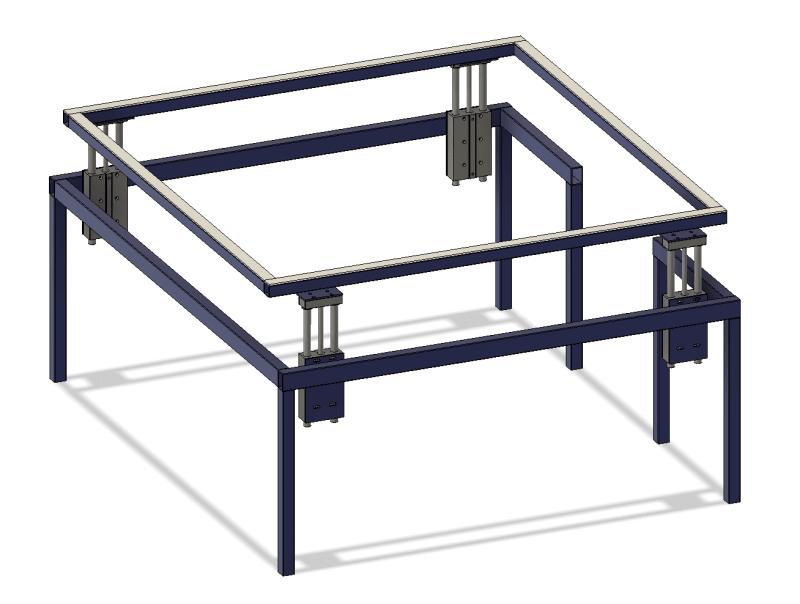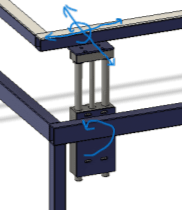MechvsManu
Mechanical
- Mar 20, 2024
- 24
I have a welded frame with 4 Festo air slides to lift a product. It's worked fine for months but now seems to bind and jamb more and more. I've had maintenance do all the usual suspects - oiling, check air line, etc.
I'm assuming because it's a weldment that the cylinders are just fighting each other due to misalignment so my solution is to replace the bolts with shoulder bolts that will give the cylinders a chance to move a little and hopefully solve any binding issues.
Is there something basic I'm missing?

I'm assuming because it's a weldment that the cylinders are just fighting each other due to misalignment so my solution is to replace the bolts with shoulder bolts that will give the cylinders a chance to move a little and hopefully solve any binding issues.
Is there something basic I'm missing?


